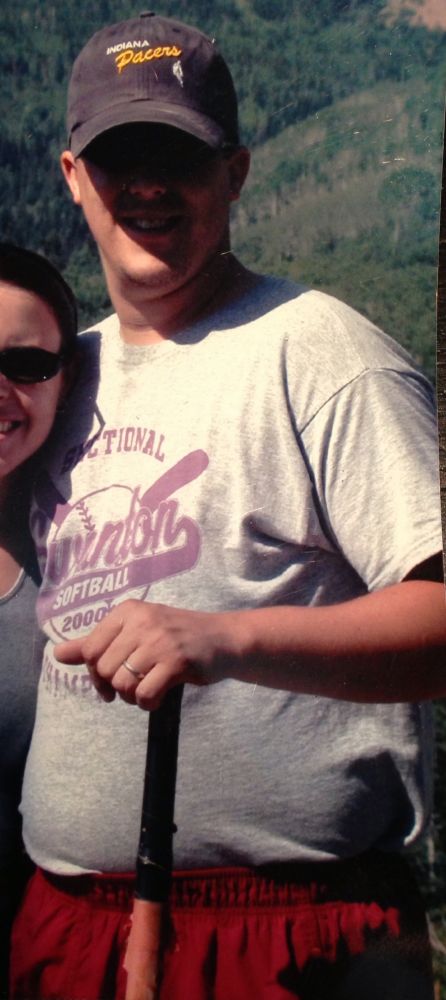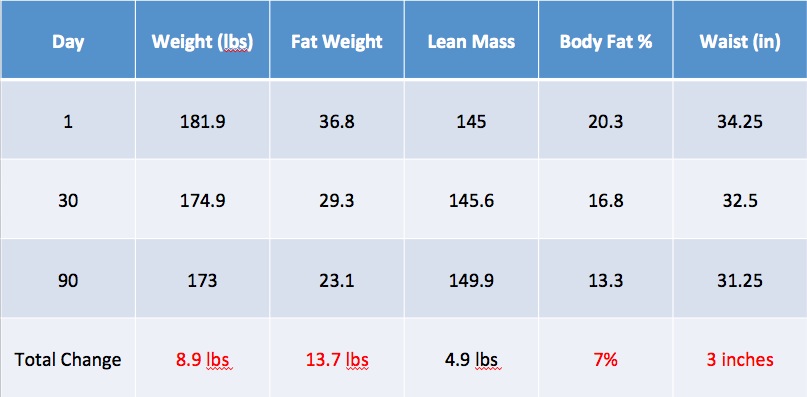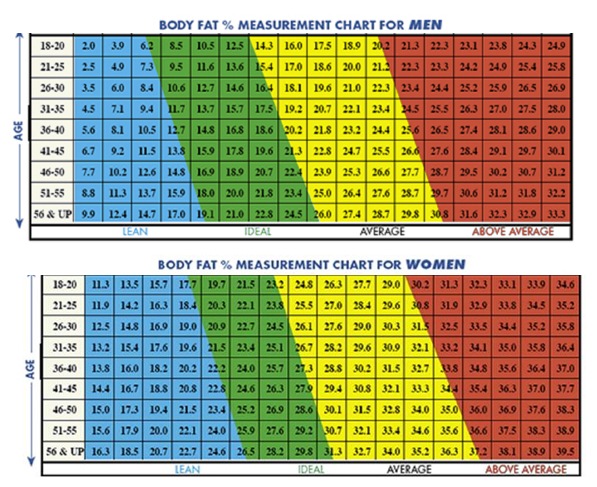My Weight (and then Fat) Loss Journey
2005 
2012 .jpg)
2013 
Much has been chronicled of my health transformation that introduced me to integrative medicine, changing my life's course forever. It's a significant part of the story of my practice and the story I tell over and over again whether it's a patient interaction, business opportunity or speaking engagement. Anyone who has heard me speak has seen the 2005 me photo. It's validates the journey and message. I came from self-medicated panic attacks, near obesity, fatigue and burnout to what I began claiming was optimal well-being. I was eating whole foods and running mini-marathons. I was down 50 pounds from where I started and keeping it off.
But was I optimal? My LDL was still over 130. My HDL was still below 50. I still had a bit of a belly (or I was "gutish", as my wife would say).
The course of my health and well-being took another major this March (2013). I was at the Fairmont Scottsdale Princess for Well & Being to help them get their flagship integrative clinic off the ground. I met Craig Cristello, the exercise physiologist there and sat in the Bodpod to have my body composition measured. I'm healthy, I'm fit, no worries. But the numbers told a different story. My percent body fat was at 20.3% percent. I am not sure what I was hoping for going into it. I did take a peek at this graphic and realize the best I could hope for based on what I was seeing in the mirror was to be less than 20%, but I was not.
Where did this rank in regard to health? Was I still in ideal range? Here is the chart (source):
20.3% = Average. Ouch. Here I am leading a mission of optimal health and well-being. Average. That won't work.
Now to be honest, in all of the time from my initial weight loss to becoming an integrative physician, I never really thought about weight loss. I never advertised that is what I did. Never allowed patients to make this the goal. Health must be the goal. Sure weight correlates at some level with health, but it should not be the ultimate goal. It was pretty obvious to me that using a scale to measure one's weight was useless: are you gaining muscle, losing muscle/bone/water or fat? No way for a scale to tell. But for the first time I had real data that mattered. Something that could be tracked, and something that really mattered. How much of my weight was fat? Now there is a goal to aim for and a way to track it: Lose fat, gain lean mass (AKA muscle). Eyes opened.
Time to figure out how to lose body fat while either preserving or buidling muscle, the Holy Grail of health. I had been following a generally paleo style of eating and working out 3-4 times a week lifting heavy weights. After reviewing my nutrition in detail, Craig suggested that maybe I was consuming too many calories. The nice thing about the body composition report is that it estimates resting metabolic rate (RMR), which is the calories I burn in 24 hours doing absolutely no physical activity. It also estimated the daily calorie burn based on varying levels of activity. Drinking the paleo Kool-Aid (if there is such a thing, if there isn't, it's coming soon to a Whole Foods near you), I could not imagine how calories fit into the equation. Needless to say, I kept his advice in mind as I went about trying to drop my body fat percentage at the next measurement one month later.
I realized that I needed to track my intake if I wanted to make any meaningful and/or lasting changes. I began to get back into reading about nutrition in a way I had not since 2006 when the concept of nutrition was a lightbulb going off in my head. I dug into the evidence and philosophy of eating for optimal health, for body fat loss and not just weight loss. Was it total calorie intake or where the calories come from? I assumed that it had more to do with the types of calories, but also decided to give some focus on overall calorie intake as well. Now that I was measuring so much more than a number on scale, I would learn what was working.
I started using the MyFitnessPal app on my iPad to track my intake (next blog will detail exactly what I did and how you can do this). I started by consuming 2200 calories per day. This was around my estimated RMR, so by being active and working out I knew there would be a daily calorie deficit. I did not at the time, and still do not think that calorie intake plays a big role on a day to day basis, only on the extremes, either too little (most often for people) or significant excess. I am also convinced that exercising in a way that contributes to calorie burning is worthless. There is way too many other variables involved. Counting calories burned during exercise doesn't matter. Making your muscles work really hard so that hormonal balance, things like insulin and human growth hormone, works for your metabolism is critical. Despite this, I still stuck with 2200 calories to start.
After several days of tracking, I started to get much more interested in the pie chart of macronutrient (fat/protein/carb) consumption that MyFitnessPal apps (there is a trick for getting the pie chart on the online version) provide. Watching my percent of fats, proteins and carbs change based on the meals I ate intrigued me and took much more of my attention than calorie totals. After some study into suggested balances, I ultimately fell on a focus on 60% of calories to come from fat, 25% from protein (more of a muscle building range), and 15% from carbs. This 60/25/15 was my new mantra.
A Successful Day!
What I found in focusing on a daily intake of 2200 calories at 60/25/15 was that I was burning pure fat. I started measuring my waistline first thing every morning as a cheap way of assessing fat loss:
1. Wake up and empty bladder
2. Use flexible measuring tape around abdomen at the belly button
3. Decide whether you are going to flex abs or leave relaxed (I chose to flex, smaller reading!). Whatever you decide do it this way every morning.
My waistline was shrinking! I started at 34.25 inches. I was consistently seeing a 0.25 inch decrease on average every other day. My 32 inch waist pants that I was once so proud of (left behind 36 inch waists in 2006) were starting to fall off of me. The only thing I added to my fitness regimen was adding one day a week of intermittent sprinting. I started to do this on the treadmill at the gym, running at about 80-85% max for 2 minutes with a 2 minute walk for 20 minutes. I have since fallen in love with Tabata sprints and shrunk the time spent sprinting down to 4 total minutes using either a recumbent bike or on the road.
30 days later it was time for my body composition test. My total body weight was down from 181.9 lbs to 174.9 lbs, and my percent body fat had dropped to 16.8%. That meant a 30 day loss of nearly 7.5 pounds of pure body fat, with a slight gain of 0.6 pounds lean mass (ie. muscle)! The middle of the ideal range. Goodbye average.
Mission accomplished. But I wasn't done, I was having too much fun and enjoying the results. I was fueling my body and my brain. My mental function was noticeably improved by my own assessment: sharper, more clarity, more energetic. This all fits the claims about driving up the fat/carb ratio of the diet Dr. Perlmutter will be making soon in a book that I am anxiously awaiting to read: Grain Brain.
My next goal: continue to drive down body fat but now increase lean mass. Next body comp test was scheduled for the 90 day mark.
In order to do this, I kept my 60/25/15 the same, just a greater focus on dialing this in on a day-to-day basis and increased my calorie intake. I pushed daily intake up to 2500-2800 calories per day. I also began to play around with carb refeeding taking a day every 1-2 weeks of "blowing up" my pie chart and pushing carbs higher. This came from the sugary rice of sushi, fruit, plantains (amazing when sauteed in bacon fat), potatoes and maybe a 2nd (or 3rd) glass of red wine.
Exercise regimen stayed the same during this time.
Going into my third body composition test: Waist now down to 31.25 inches. Percent body fat =13.3% with in increase in lean mass of over 4 pounds!
That makes the 90 results:

...all by eating more fat.
Looking back on my eating before this whole thing started though, there were certainly too many carbs on a day-to-day basis. Not a lot of heavily refined carbs, which is most certainly why I never gained any of my original weight back, but too frequently indulging in the "paleo" granola, non-gmo kettlecorn and dark chocolate without limitation.
Was it the total calorie intake focus and likely reduction? Maybe. Was it the laser-focus on where the calories were coming from? Almost certainly. I'm convinced now that it's some combination of both, maybe 80% type of calories (fat/protein/carb) and 20% total amount of calories. I also think that in addition to the ratio of fat/protein/carbs that you are consuming, the type of these individually matter as well. I would not fully follow Atkins (at least the original version) because it didn't matter what type of fat you ate. It matters. The body depends on a low ratio of omega-6:omega-3 fatty acids (more on this in future blog posts) for inflammation purposes. Something like 3:1 is ideal. The average American is estimated to be around 20:1, or greater. The types of carbs matter too, a lot. Eating a good portion of vegetables daily and making this the main source of your 15% carb intake will drive a better result than filling that 15% with Skittles. The better you are at getting the right calories from the right foods, the less you need to worry about calories.
All of that being said (or written), I think the "calories don't matter focus" of the paleo world is likely true. They don't matter. As long as you are eating based on your body's hunger signals and stopping your intake when you are satisfied and no longer hungry. My problem is that I really suck at listening to my body when it comes to hunger. I have a long history of overeating (see the 2005 photo) and continue to have the ability to consume beyond the fullness signal my stomach and brain are trying to scream to me. I remember a roommate in college used to joke that I had a tapeworm as I was able to consistently put away pounds of food on a regular basis. I suspect a lot of us have this issue. If day after day we consume a significantly excessive amount of calories (I'm talking 2000-3000 excess), we'll fatten, regardless of the source of said calories. Since I cannot reliably listen to my body signals, tracking calorie intake is helpful. Through this though I find it very easy to miss meals and go long periods of time without eating. Access to good food when travelling can be difficult, so I had no problem skipping a meal or two until I got to my destination.
Speaking of tracking calories, I think the bigger issue in those seeking weight loss is that they do not consume nearly enough calories. For them, tracking is important too, but for different reasons. Low calorie eating for periods of time puts the body into a mode of starvation. A smart body subjected to starvation is geared to conserve any energy it can. So over time, the low calorie eater gets tired (no energy to burn), and either loses no body fat or actually increases their body fat (especially when they give into their hunger and binge or consume excess calories). This is the most common reason people are not getting the results they are after. I am currently consuming 2500-2800 calories per day and as long as I dial my carb percentage into the 10-15% range I keep my body fat down and even gradually continue to lower it. I suggest women pulling themselves out of starvation diets and who begin to focus on body fat loss and where their calories are coming from aim for 2000 calories per day.
What about my lipid markers? For the first time since I have been tracking my LDL is below 130, but more importantly my HDL is greater than 60 and climbing. A newer and maybe more telling marker is the VLDL (very low-density lipoprotein). It's the lower density forms of LDL that seem to be more at risk for oxidation and then plaque formation. On my last panel, my VLDL was undetectable.
This experience has been eye-opening for me (and my wife, who no longer calls me gutish). I've spent countless hours reading and studying nutrition again with a renewed focus: body fat loss. This Holy Grail is essential for health. Insulin resistance and excess body fat work hand-in-hand, driving us toward heart disease, diabetes, Alzheimer's and countless other maladies. I've enjoyed getting back to nutrition basics with patients and helping them rebuild their nutritional platform and understanding to achieve the health and body composition they desire.
Stay tuned for more regular postings on the how and why to lose body fat.
Contributed by:
Dr. Jeffrey Gladd
Owner
Dr. Jeffrey Gladd graduated from Indiana University School of Medicine in 2001. He then went on to train in family medicine...
View Full Bio »


